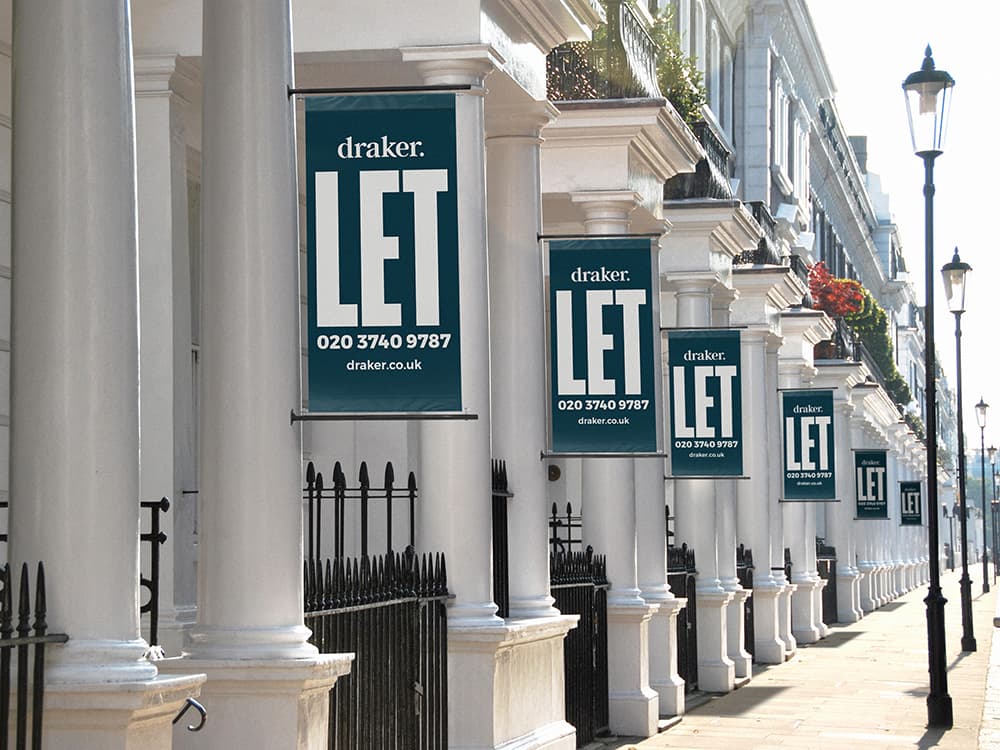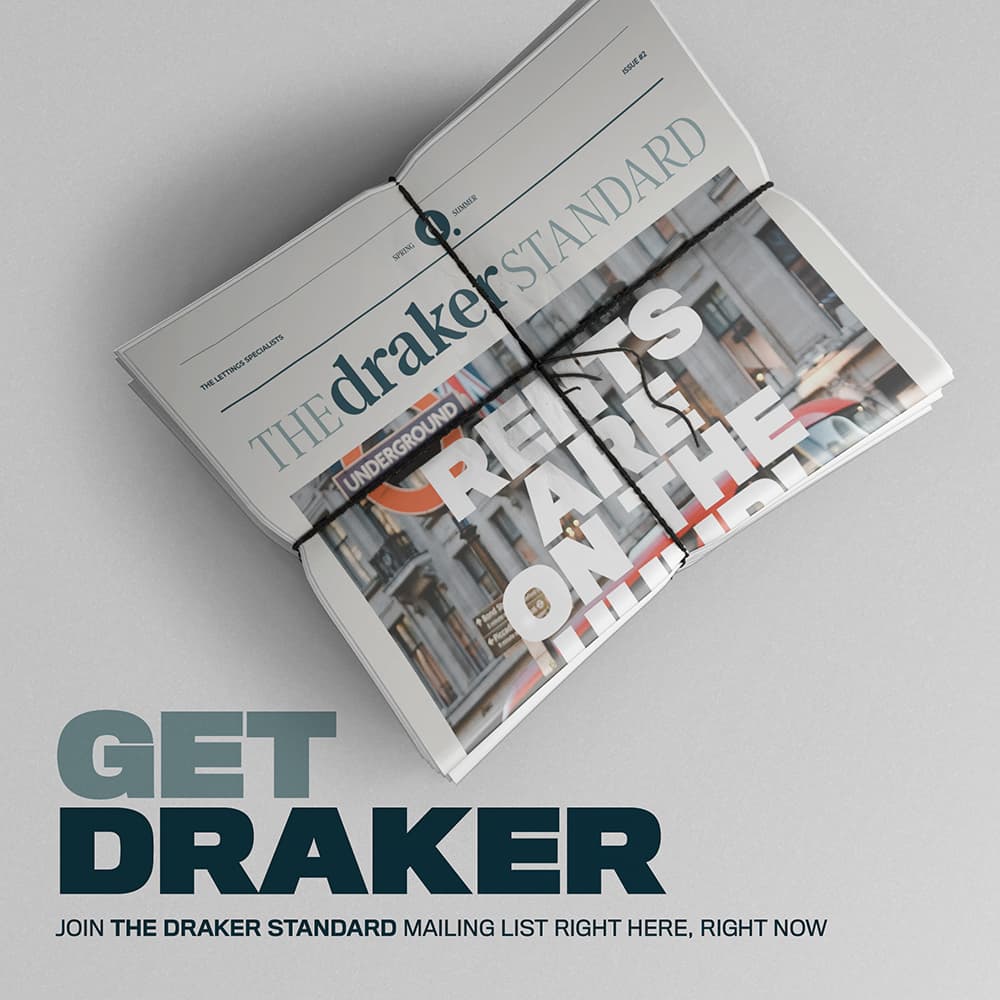
The Great Recovery
The return of lettings in London
Genteel Cadogan Square in Knightsbridge –where the houses that haven’t been converted into flats can fetch up to £25m– rarely sees more than one or two properties available to let at any one time. When one does make an appearance, it’s snapped up within weeks. Yet in the 90 days leading up to August 2020, nine apartments became available at once, from small, two-beds for around £850 a week to a duplex for a weekly rent of £2,300. The existing tenants –a mixture of international students, academics and professionals– all failed to renew, or they left early, as the pandemic took hold.
In so doing, the residents of Cadogan Square held up a mirror to a scene of mass exodus that was taking place across primecentral London. Stock levels went through the roof – a 200% increase in those early months of lockdown, as tenants returned to families abroad or to houses in the countryside. Knightsbridge and Belgravia were the hardest hit, with the rental market flooded by a surge of newly-available stock, including short let properties that –as travel seized up– no longer had any takers. Chelsea was another casualty, with our Sloane Square office seeing the number of available properties shoot up from 91 to 270 within weeks. Fast forward a year, however, and the picture has been turned on its head.
London’s prime rental market is experiencing the first property shortage in more than 10 years. Between July and October 2021, property levels fell by 70% and applicant numbers increased by 45%. As tenants quickly began to return to London, a sense of urgency re-entered the prime central London market and property at all levels started to let. The smallest properties have been letting fastest and led the price increases. A one-bedroom property in Grosvenor Waterside in Chelsea was on the market last year for £2,275 per month. As the pandemic dragged out, the asking price fell to £2,145. Now, since the recovery, Draker Lettings recently secured a tenant –after multiple offers– at £2,578 a month, a 20% increase from its original asking price, and the highest price achieved for a flat of its size in the building.
Larger properties are following suit, with the best properties attracting up to eight offers each. Take Tarnbrook Court in Sloane Square, on the market last year for £5,420 a month, then reduced to £4,750 as the pandemic dragged on. Draker Lettings recently secured a tenant for the property, after multiple offers, at £6,067 a month, a 28% increase on the original asking price. As 2021 lurches towards an end, Covid numbers are on an upward trajectory again. But two thirds of Londoners are now double jabbed, boosters are being rolled out to the over 40s and single jabs to the over 12s - and overseas travel (though not without its complications) back on the agenda. There’s a prevailing sense that if not entirely out of the woods, we are at least seeing that hopeful chink of blue sky.
The central areas that fell the most last year are now rising the fastest, with the number of new tenants registering with us steadily increasing by 95% from the start of 2021 to now. At the height of the pandemic, there was a halo effect in which tenants left the city centre and gravitated to outer areas of London offering greater space and greenery. Now the place to be, however, is the hole in the middle of that halo again. In Belgravia, rental prices rose by 40% in the first half of 2021, Knightsbridge by 14.4% and South Kensington by 13.75%. There are various factors at play here –diff erent demographics who are bringing life back to London.
International students are returning in great numbers, tired of living back at home with their One Direction posters and raring to give hands-on, face-to-face university life a go. “We were fine at home with our family, but we definitely feel like we were missing out on an important year of networking, making friends and getting on with our jobs,” comments Emma, who –along with her newly-graduated sister Abigail– has flown the nest a second time and is now renting a flat in Regency Street in Westminster. “Everything is proving much easier now that we are living together in London,” she says. Chelsea and South Kensington are also in constant demand among affluent students, but Fulham is proving to be the real post-Covid hotspot for co-habiting students or young professionals, with the availability of properties for sharers having fallen by 85% since summer.
In July and August, 80% of three-to five-bedroom properties in Fulham were let to students. When one three-bed property in Fulham’s Langford Road came on to the market in mid-October, it saw 60 leads in one week, received five offers and was let within a week for over the asking price, for a two-year tenancy. Corporate relocations – many of which have been put on hold for a year or more - are re-emerging too. Despite Brexit, despite Covid, Europeans are house hunting again.“It’s very positive to be able to finally carry on with life and relocate to Chelsea,” says Raj, the European director of business development for a global solar project developer, who, after several stalls due to the pandemic has eventually been relocated to London by his company and moved into a property in Draycott Place. Since travel restrictions between the US and UK were lifted in early November, the Americans are back too and account for about 11% of our new tenants, mostly in search of three/four-bed family homes.
The gradual migration back to the office for two or three days a week is gaining speed too, bringing with it a strong demand for pied àterre properties in central London –particularly among those who moved the family to the countryside during lockdown, but now need a base in the city for a few days a week. The overwhelming majority of employees are happy to wave goodbye to full-time WFH. Even the commute comes with a sense of release from working at the dining table now, and young employees I particular, who have been stuck for so long in small rental flats with no outdoor space, are relishing feeling a sense of productivity, the social life and positive mental wellbeing that comes with being around colleagues again.
There’s an upside for landlords too. As people return to the office rather than remain confined to their homes 24/7, the wear and tear on their properties – and the possibility of things getting wrecked or going wrong – is greatly reduced. Many people still have a great deal of flexibility, however, on how often they return to the office – if at all. And for tenants, it’s driving them to enjoy the freedom of choosing a property for its aesthetic appeal rather than its proximity to their workplace.
Outer prime areas of London – the likes of Chiswick, Hampstead and Richmond – have benefitted hugely from buyers and tenants wanting outdoor space, whether it’s a garden, terrace or balcony: anything that offers views beyond four walls. During the first 18 months of Covid, flats fell out of favour, taking 19% longer to let than before, and houses were renting out 14% faster than pre-pandemic. Now, in late 2021, flats are letting in record time, many on the same day they come to market, with a queue of renters waiting for new stock to come on the market.
So where do we go from here? To see central London now, busy with visitors, thriving and open, is a hopeful sign of things to come. Soon, international travel will truly open up again without caveats. Around 90% of students have received at least one Coronavirus jab –and many of them will already, or soon, be tenants in the private rented sector, able to enjoy what London has to off er again. The next couple of years look heavily weighted in landlords’ favour –which will come as a welcome relief in a sluggish market that has been hampered by the removal of tax breaks for landlords and little increase in rental prices over the last decade. The current supply and demand dynamic is seeing 10 people registering for every new rental property that comes to the market, compared with two per property in 2020. Last year’s exodus has morphed in 2021’s bounce back for the rentals market. Now all anyone wants in 2022 is normality.


